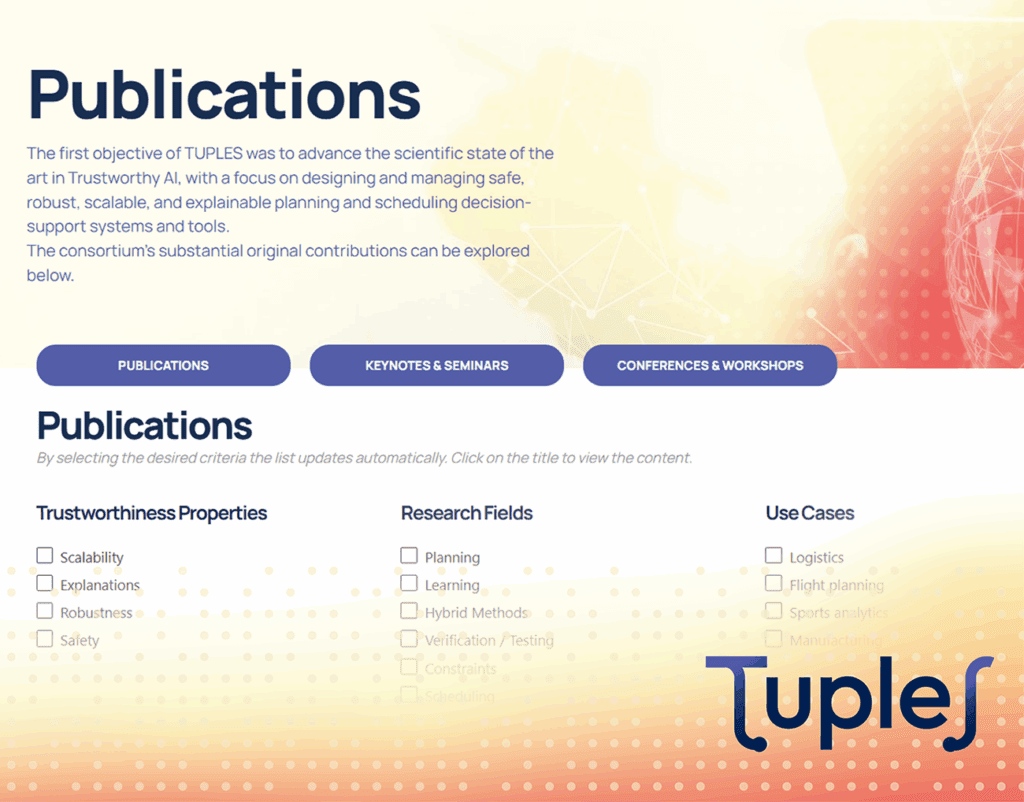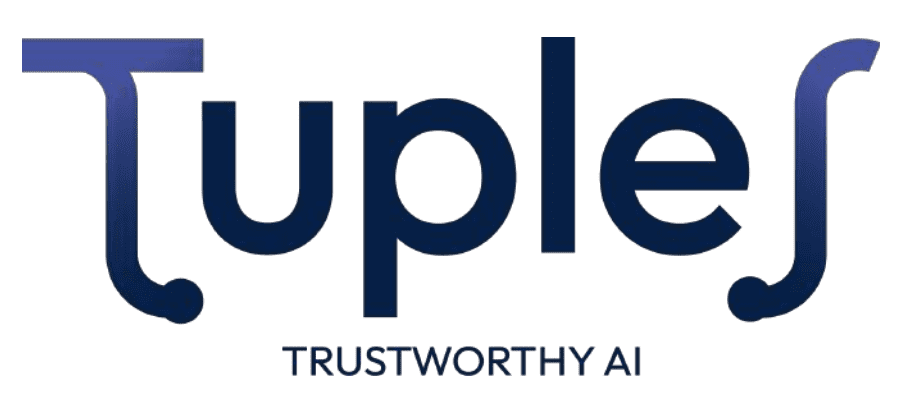Scientific Results – Publications
-
29/09/2025
-
NewsNews

TUPLES has focused on building trustworthy planning and scheduling systems that are scalable, safe, robust, and explainable—bridging fundamental research with impactful applications.
To achieve these objectives, the cornerstones of our scientific contributions were:
(1) combining symbolic P&S methods with data-driven methods to benefit from the scalability and modeling power of the latter, while gaining the transparency, robustness, and safety of the former.
(2) developing rigorous explanations and verification approaches for ensuring the transparency, robustness, and safety of a sequence of interacting machine learned decisions.
From a practical standpoint, the project demonstrated and evaluated our novel and rigorous methods in a laboratory environment, on a range of use-cases in manufacturing, aircraft operations, sport management, waste collection, and energy management.
During this period, from a scientific standpoint, we continued to:
- advance the state of the art with novel hybrid approaches (model-based / data-driven) for planning and scheduling that aim at increasing the robustness and/or scalability of existing methods;
- developed new methods for verifying, testing, improving or enforcing the safety and robustness of the muti-step decisions recommended by these approaches;
- came up with interactive explanation approaches allowing users of planning and scheduling systems to understand why a solution was recommended over others, and to use this understanding to guide the system towards a solution satisfying their preferences.
Altogether, the project produced 68 scientific publications, over 50 of which were accepted at top-tier AI conferences and journals, with two receiving awards. Many of these contributions were accompanied by publicly released code, ensuring accessibility and reusability by the broader community.
These results were made possible thanks to the support of the European Union, whose Horizon Europe funding has been instrumental in advancing both the scientific and practical outcomes of the project, while uniting teams from different countries and disciplines in pursuit of common goals.
All publications are available in the dedicated section of the TUPLES website, where each entry directly links to the corresponding paper.
This resource provides open access to the knowledge generated during the project and serves as a lasting legacy of the scientific advances achieved.
